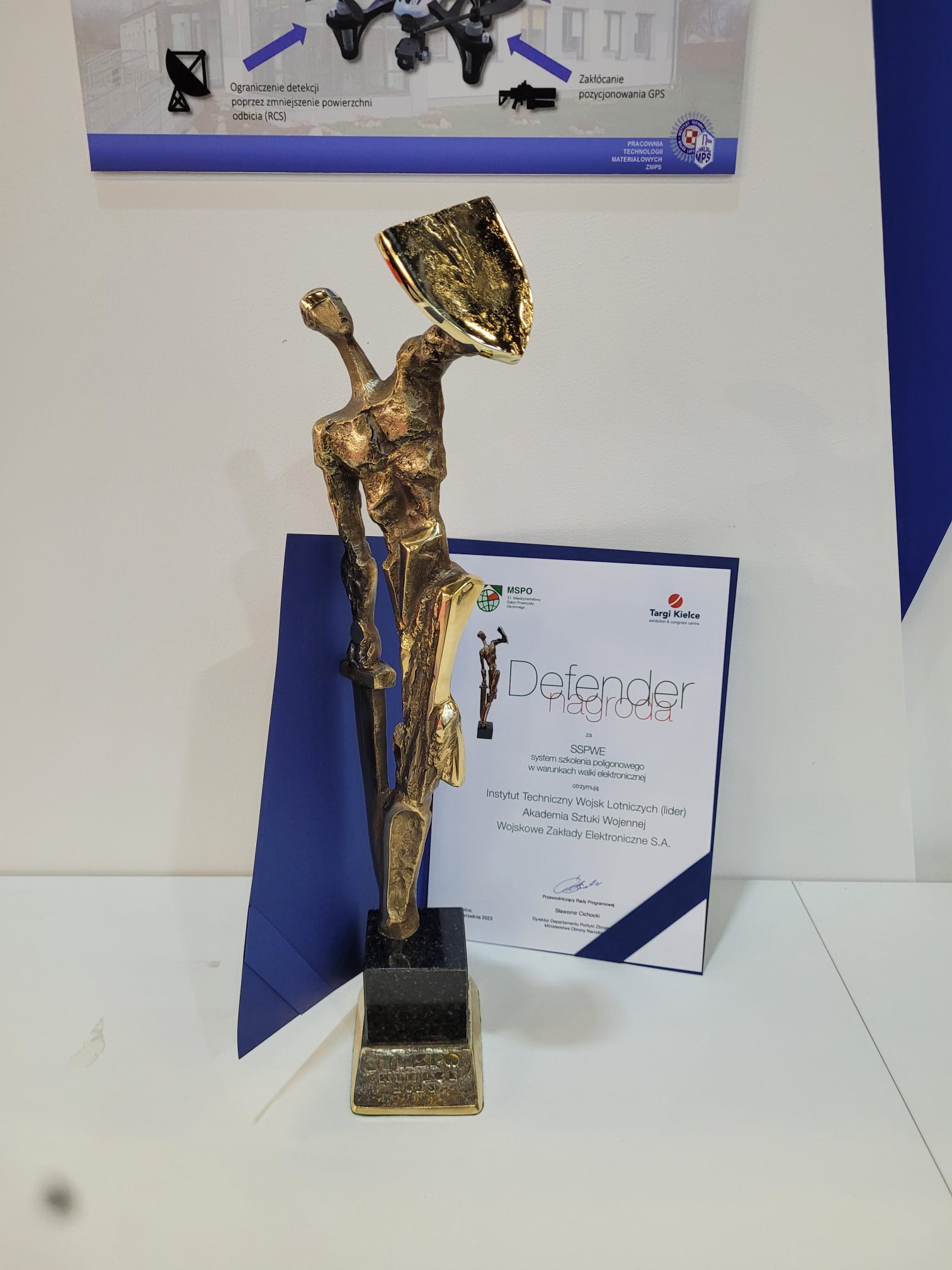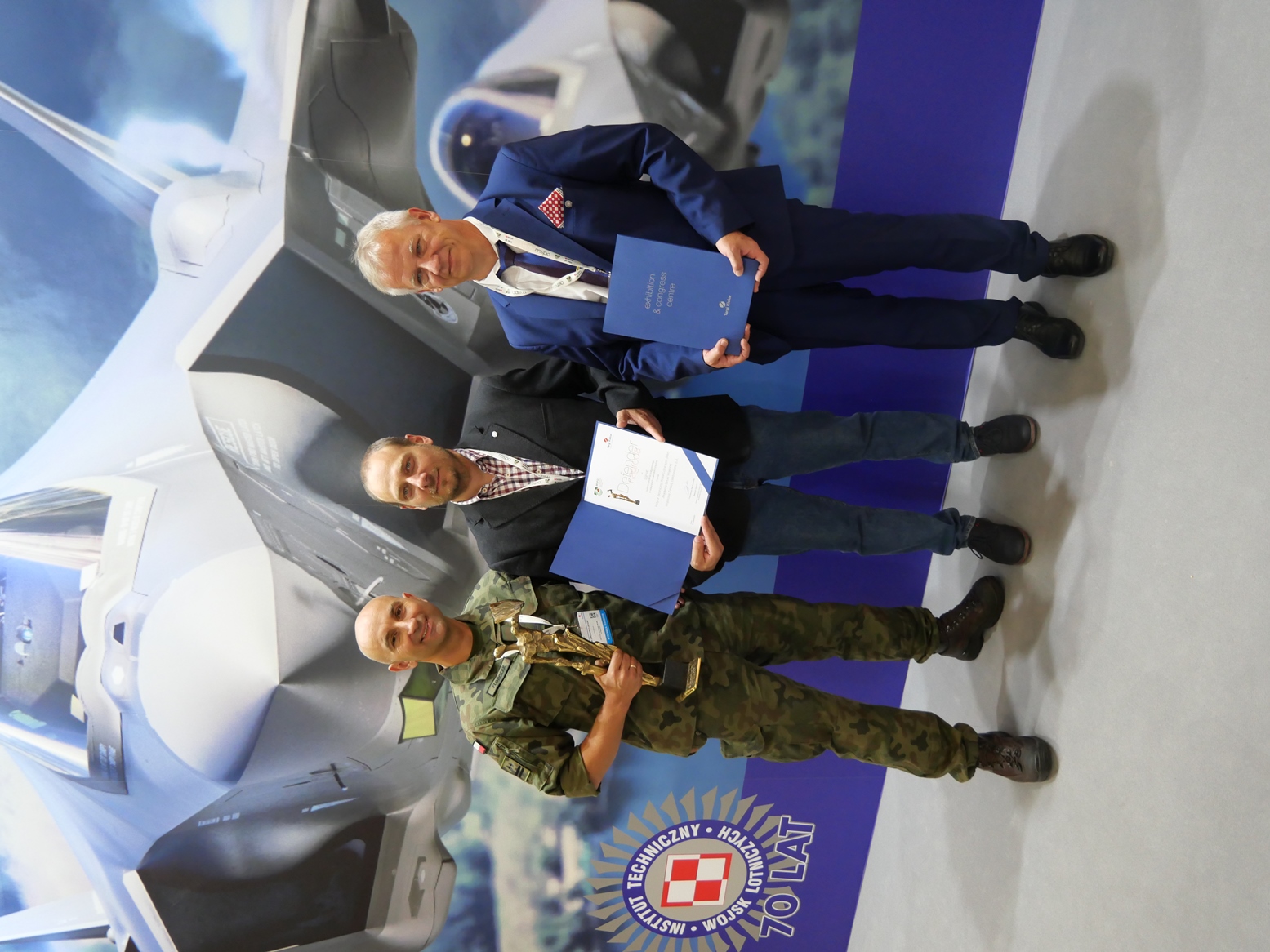Electronic warfare training ground – support for the training process of aircraft crews and Air Force air defense systems

 Project title
Project title
Electronic warfare training ground – support for the training process of aircraft crews and Air Force air defense systems
 Name of Beneficiary/Beneficiaries
Name of Beneficiary/Beneficiaries
Air Force Institute of Technology - Leader,
War Arts Academy,
Military Electronic Works S.A.
 Name of programme
Name of programme
The project is implemented for the defense and security of the state
 Competition
Competition
Competition No. 3
 Project value
Project value
PLN 20,113,324.00
 Funding value
Funding value
PLN 19,253,696.00
 Project delivery period
Project delivery period
from December 20, 2012 to September 19, 2023
Get to know our team
Electronic warfare environment simulator for pilots | MSPO in Kielce 2023
Video
See the effect of our work


What problem does our project solve?
The SSPWE system created as a result of the project is intended to support the training process of aircraft crews (SP) in electronic warfare conditions by creating a microwave electromagnetic environment close to the real one, as well as obtaining information about the crew's reaction to the existing conditions. As part of the project, technologies unique in our country were developed, including: conducting radio-electronic warfare. The first is the ability to irradiate an aircraft with electromagnetic emission signals simulating selected, real sources of threats (anti-aircraft systems).
Electromagnetic emission signals reproducing real radar signals in various operating modes characteristic of anti-aircraft systems are generated with impulse power of up to 4kW per pulse, which ensures a maximum range of 150 km for a typical RWR (Radar Warning Receiver) receiver. Another is the ability to record aircraft maneuvers and launch radar flares and radiolocation dipoles using the Optoelectronic Subsystem. Moreover, the developed SSPWE system is supported by an autonomous source of radar information (Observation Subsystem) built on the basis of a secondary radar operating in the tracking radar regime. An additional distinguishing feature is the ability of the system to cooperate with primary Polish radars (NUR and Awia series). Additionally, the SSPWE system is equipped with an ELINT electronic reconnaissance station (Reconnaissance subsystem) ensuring the registration of signals generated by active aircraft jamming systems, which, when combined with other subsystems, makes it the only such training system solution known in the world.
Who will benefit from the project results?
The system will be implemented ultimately at the 21st Central Aviation Testing Ground in Nadarzyce. Due to its full autonomy, the system can be implemented practically at any other military training ground in Poland. It is also possible to use the SSPWE system at any air base (as was the case in preliminary or qualification tests). The project results will directly benefit the crews of military aircraft equipped with self-defense systems.
What was the biggest challenge for us in implementing the project?
The project, which lasted almost 11 years, was a huge challenge for the team of performers. It was directly related to the course of the entire project, which can be divided into three phases:
1. completed in April 2015. (suspension of project financing), as a result of which a system was created without a clear indication of the function and target configuration on the part of RON (Ministry of National Defense) (lack of approved WZTT);
2. lasting since April 2015. until December 2018, during which work was carried out to redefine the needs of the Polish Armed Forces in terms of the target configuration of the designed system;
3. the last phase included dramatic changes in the configuration of the project subject and the resulting large number of purchases. At a critical moment in order fulfillment, problems occurred due to the global COVID-19 pandemic. Moreover, there were problems with the smoothness of obtaining agreements, as well as with finding places to organize tests (both preliminary and qualifying)
Our advice to other Applicants
It is crucial to obtain approved requirements from the future User at the initial stage of work implementation. A clear declaration from the ministry responsible for a given project is also necessary regarding the method of project implementation and the permissible deadlines for obtaining approval of key documents. At this stage, it is necessary to effectively involve the project coordinator and the future user in the process of approving documentation and research planning. Some other events (e.g. collapse of the supply market during a global pandemic) cannot be avoided.